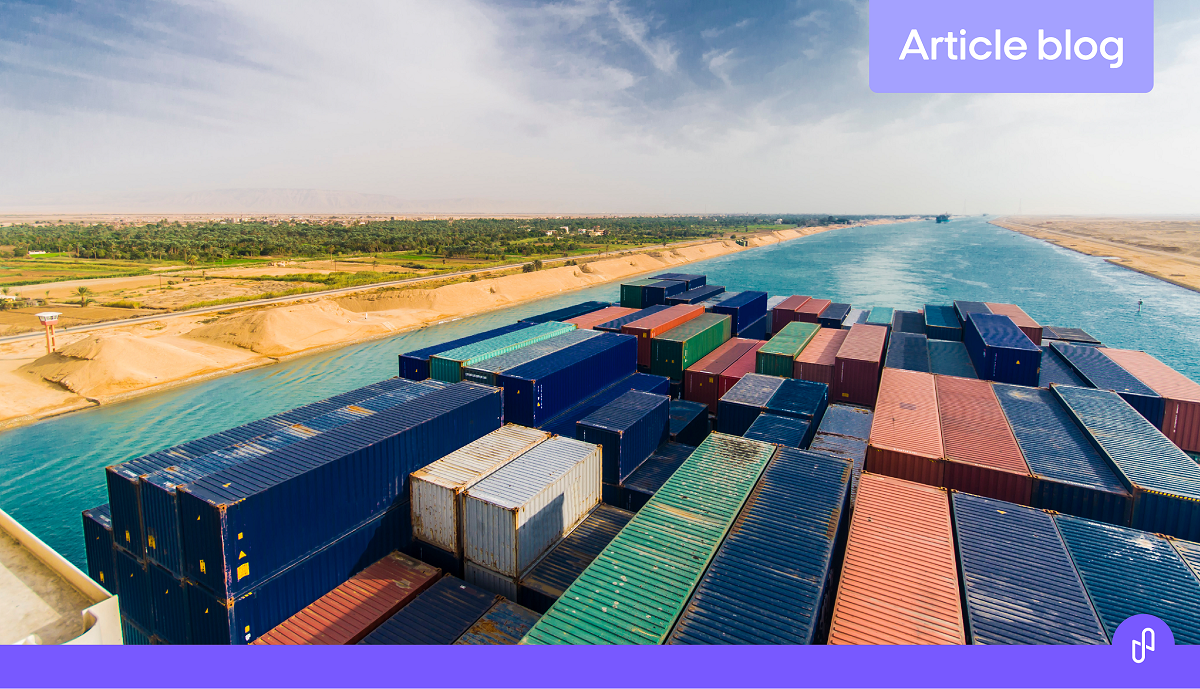
It is of course too early to draw definitive lessons from the health crisis. The stakes are immediate and the time is running out for operational management. Nevertheless, it is certain that within supply organizations there will be a before and after COVID-19. We can therefore begin to question, reflect and identify potential levers, especially digital levers, to prepare for the aftermath.
The current situation is an indisputable reminder that freight transport is indispensable in many respects. On the bridge to ensure the supply of the country in exceptional circumstances, transport professionals, both at the principals and the carriers, demonstrate, as usual, great ingenuity in finding solutions in an emergency. At the operational level, there are many difficulties: in addition to the sharp drop in volumes transported, flows are unbalanced, vehicle loading is no longer guaranteed, transport plans are largely overhauled and capacity is difficult to find on certain routes. Drivers and handlers, for their part, continue to operate in very difficult circumstances, sometimes too much so. Their efforts and work, which are more than ever of public utility, are to be commended.
The complexity of the supply chains in question
In short, everyone is doing everything possible to manage operations as well as possible. The stakes are for the moment here. However, already, voices are being heard to carry out an in-depth reflection on supply chains: their complexity, their continuous lengthening, the interweaving and therefore interdependence of the different stakeholders are at stake. The slightest grain of sand and everything is out of order. There is talk of a return to proximity, of relocating production – which would also have desirable ecological consequences, although this is a matter of debate. It is obvious.

Of course, the increasing complexity of the supply chain has not been all things being equal. The digital transformation, among other things, has been able to counterbalance this evolution by injecting more agility. It is clear that there is still a long way to go. It is not a question of giving lessons, especially since there is no doubt that without effective digital tools, the consequences of the crisis would be much more pronounced. However, the question must be asked: where is the solution for more resilient supply chains and transport? It is, of course, too early to answer, but it is not too risky to say that, whatever happens, digital transformation will continue to play a central role, especially in times of crisis.
The central challenge of cooperation
This is already the case in these complicated times, in the daily management of operations. With the introduction of containment measures, teleworking has become the norm for some transport employees, particularly operational and supervisory staff. The activity must continue at a distance. This implies two things: on the one hand, that everyone has access to all the information they need to do their job efficiently; on the other hand, that teams can easily share this information, be able to make common observations and take good decisions together.
To this end, the prerequisite is obviously to have tools in SaaS mode: this has already been a major software trend for several years, with most publishers offering their solutions in this form. So while this development has not waited for the crisis, it is possible that the latter will contribute more to making the software package obsolete, whose cumbersome and rigid deployment and use are less and less adapted to the functioning of supply chains.

Beyond the mode of use, solutions specifically focus on cooperation between supply chain professionals within the same company, generally – but not exclusively – taking the form of TMS in SaaS mode, they enable transport operations to be planned and monitored by adding advanced communication tools and/or organizing a community of users. The current context is therefore a litmus test for these solutions, as their promises have become so relevant for managing operations in the best possible way.
Contractors, service providers: maintaining the link
The other issue of cooperation, and perhaps the most important in this crisis, is that of exchanges between shippers and carriers. Each of them suffers the consequences: difficulties in carrying out operations, falling volumes, loss of earnings… Necessarily, in this context which requires rapid decision-making, it is crucial to communicate, exchange and inform well. We have seen, for example, that the fare increases announced by certain carriers – which are understandable since their profitability is undeniably affected – may have provoked indignation among shippers who are also experiencing major difficulties.
Now more than ever, it is necessary to maintain dialogue, and it is not just a question of means of communication. In order to maintain a partnership approach, clients and their service providers must have access to the same information and data, so that they can start discussions on a sound basis and make common observations.

This brings us back to a fundamental element of any efficient supply chain organization and healthy communication: reliable and exhaustive data. As we know, these fundamentals are sometimes absent, especially in freight transport where information, generated by numerous specialized tools, disseminated among multiple stakeholders or simply non-existent, is often fragmented and unreliable.
Data, visibility, decisions: a triptych that is more essential than ever before
However, between containment measures, unbalanced flows, falling demand combined with potential capacity concerns for the transport of basic necessities, it is easy to imagine that exchanges are more regular than ever between shippers and carriers. It is necessary to inform of delays, discuss tariff adjustments, prioritize shipments, manage site closures, etc. When these discussions take place in a situation where everything has become urgent, sensitive and therefore potentially generating tension, having reliable information becomes indispensable in order to demonstrate the necessity and relevance of the measures adopted, to suggest solutions and to take joint decisions. Visibility on the transport activity is therefore at the heart of supply chain resilience.
There are two dimensions to be taken into account: at the height of the crisis – as is currently the case – it is necessary to be able to manage the emergency and respond to the most pressing needs. This implies having real-time visibility over part of the operations. This is true for all activities, but even more so for the transportation of basic necessities, particularly food, everyday products and of course medical and sanitary equipment as well as medicines. The stakes of service quality take another turn here: beyond the satisfaction of the recipient, it is a question of avoiding stock shortages with serious consequences for the common good.
Of course, in this context, disruptions and delays are inevitable while resources are limited: for everyone to manage them as well as possible, information must circulate as well as possible between sender, carrier and recipient. The value of tracking is therefore immense: by being able to directly estimate the risk of delay or to forecast an ETA (Estimated Time of Arrival), companies equipped with tracking necessarily manage the situation better than those without visibility on their shipments. They can identify anomalies and failures more quickly and therefore react quickly to limit their impact.

The second dimension is that of “tactical” visibility. Because, beyond emergency management, it is also necessary to know how to identify trends and serious abuses that will undoubtedly be very costly, given the scale of the crisis. What’s not working? Why has performance deteriorated? How can we respond? By offering a consolidated and accurate view of performance, management solutions enable reasonable, rational decisions to be made, leading to more resilient transportation. To do this, having indicators built on homogenized and reliable data will be a key prerequisite.
Automation and time saving
The current crisis also highlights the absolute necessity to automate or at least greatly facilitate certain operations, especially to deal with the unexpected when resources are limited. Take the issue of capacity. In recent years, many platforms have emerged that offer to facilitate the balancing of outbound and inbound flows by connecting shippers looking for transport and service providers looking for loads. However, we are indeed in a situation where flows are extremely unbalanced and the volumes to be transported are limited. Thus, transporters have to give up routes that would lead to insufficient profitability or even a net loss, due to a lack of filling and guarantees to find a load on the return trip. As a mirror image, some clients have difficulty in finding capacity, which is affected by short-time working, site closures or the suspension of carrier activity. In this context, intermediation platforms have a card to play. But will the facilitation of networking be enough to offset the effects of the situation described above?
Other processes are very time-consuming and can be automated: one thinks of reporting, billing control… These are not necessarily central issues in times of crisis, of course, and one may be tempted to ignore them in order to prioritize immediate management. Automation makes it possible to avoid having to make this decision.

And in the longer term?
Finally, the scale of the crisis, as we have already mentioned, is beginning to lead to a certain number of fundamental, longer-term considerations. It is not said that this will lead to anything concrete, but two obvious issues may in the current state of affairs be linked to the digital transformation of transport: on the one hand, the consideration of the risk of epidemics, or of any other major event, in the construction and operation of supply chains. These risks were of course already taken into account, and tools are already positioned in this “risk management” niche at the supply chain level, but many of them are focused on suppliers. Other solutions do allow ships to be automatically re-routed in the event of port problems, but is a broader application possible?
On the other hand, it is possible that this crisis will lead to a form of awareness of the direct impact of supply chains on our lives. Will this broaden to its ecological consequences or will it remain resilient? Will we move towards a change of model? If so, how can the environmental component of transport be integrated into the decisions that will inevitably be made? How can supply chains be made more accountable by keeping them fully functional? Here again, digital will necessarily play a central role.




